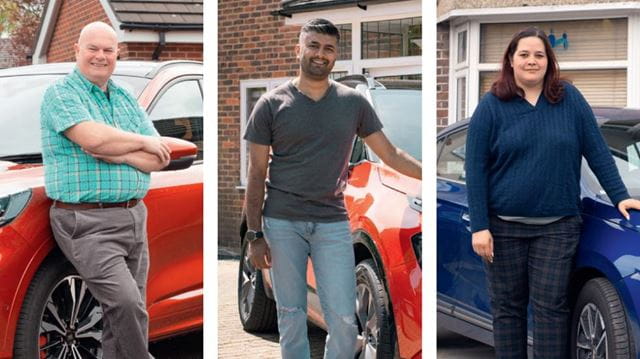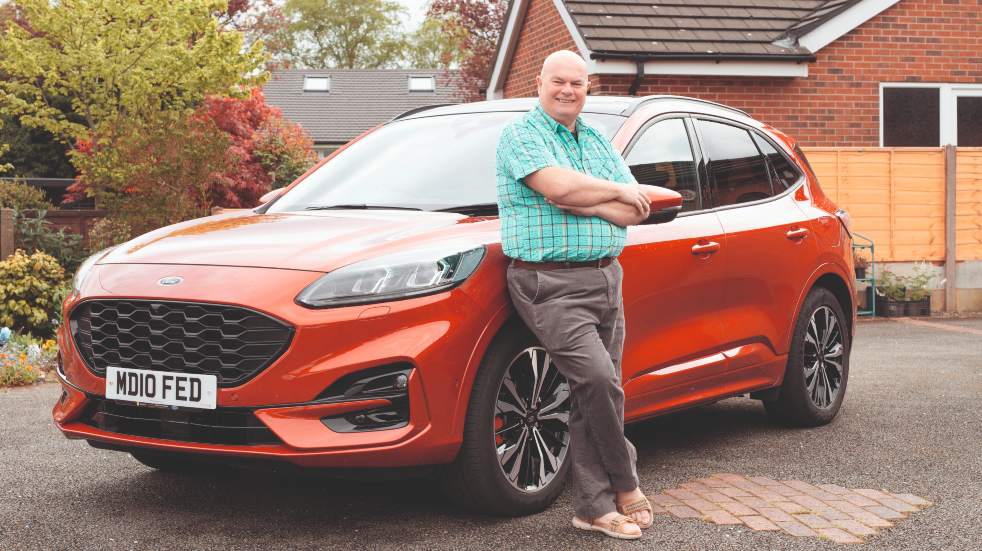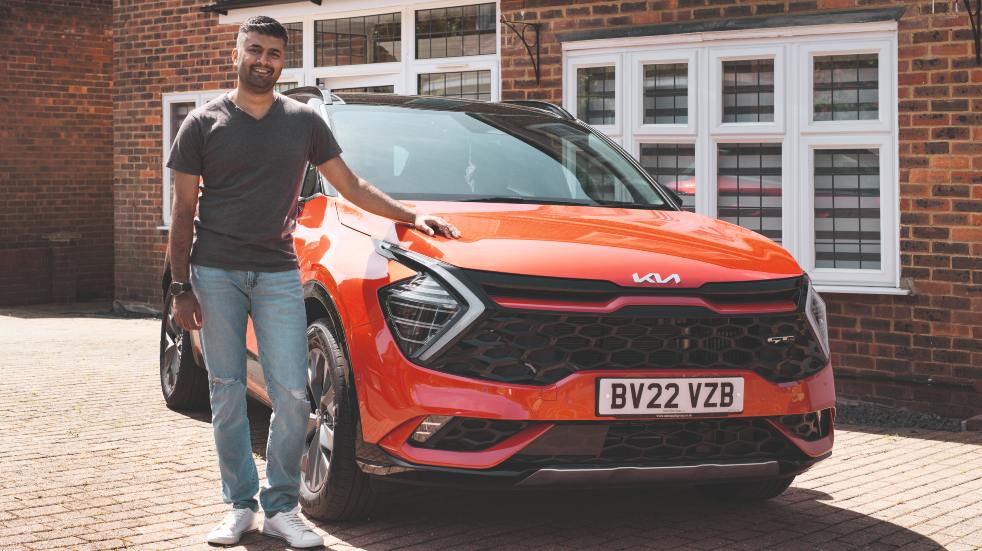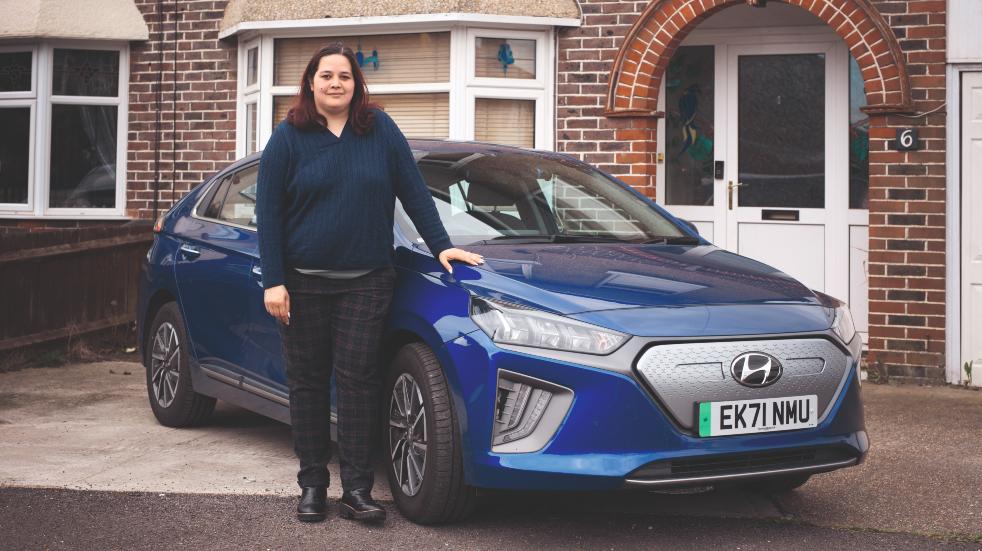
Ever wondered how all those other people can afford to drive expensive new motors? Chances are they don’t own them, and never will
Car financing has evolved rapidly, creating more routes to ownership (or not). Here’s how three happy drivers opt to pay for their wheels.
Personal contract purchase (PCP)
Midway through a three-year PCP contract, Mike Docker drives a Ford Kuga plug-in hybrid

We never even considered PCP until it was offered to us in the showroom. We assumed it made financial sense for people who are working or have company vehicles – not pensioners like us – but it’s been fantastic.
Our contract started in May 2020. Electric felt like the right choice, but our daughters live in Yorkshire, around a 200- mile round-trip away, and the EV range wasn’t quite long enough back then. I had visions of us getting three-quarters of the way home, only to have to pull into a service station to top up the battery. But a plug-in hybrid felt like a good compromise, so we opted for a new Ford Kuga with a three-year PCP contract.
We’ve tended to buy our cars outright, for cash, but PCP allowed us to keep our savings intact. We pay a monthly fee, and at the end of the contract we have three options: pay the remaining sum to buy the car, swap to a new contract for a different car, or hand it over and find something else. I don’t think we’ll buy it: the car is a bit big for our needs and the suspension is too firm for my old back, but we’d certainly consider PCP again. I’ve got my eye on a full-electric Kia Soul, with a range of 280 miles, and I’m already looking at finance options online.
We run the Boundless Lunch Bunch, meeting up with members in different places every month. It involves quite a bit of travelling, but the Kuga is great for trips like that. It has adaptive cruise control, which automatically adheres to the speed limit or matches the speed of the vehicle in front – and of course I’m happy that we’re using less fossil fuel. If we’d bought a car outright we’d probably have gone for a cheaper model, but the PCP allowed us to access some nifty new gadgets so that’s been a great bonus, too.
PCP and hire purchase: what’s the difference?
With a hire purchase agreement, you’re paying off the car in instalments and will own it at the end of the contract. With PCP, monthly payments are usually lower as you only cover the depreciation over the term of the agreement. When it ends, you have the option to buy, return or trade in the car.
Car leasing
By leasing a Kia Sportage GT-Line S, Neeraj Kibe has access to top-range technology and comfort – and he’s not afraid to haggle for the best deal

I spend five or six hours behind the wheel every day, so I need a car that’s a real pleasure to drive. Happily, my Kia Sportage has heated leather seats, a panoramic sunroof and Apple CarPlay. I also love its technology: the dashboard displays real-time navigation, 3D parking assist and a camera view of the blind spots. Sitting in traffic is much nicer when you’re in a comfortable car, isn’t it?
I took out my first lease in 2019, for a VW Tiguan, and I’ve just started my second one for the Kia. Both times, Nationwide Vehicle Contracts (nationwidevehiclecontracts.co.uk) has been the most competitive option and offered great customer service, too. For me, a three-year contract is the sweet spot: on a two-year lease the monthly fee is higher, but a four-year lease locks me in longer than I’d want. I like that I can just hand the keys back after a few years and get a brand-new car straight away. It’s not for everybody, but it feels more flexible than finance or buying a vehicle outright.
When I’m looking for a lease, I go directly to the manufacturer first to see what their best price is, then gather quotes for the same car from various leasing companies. But before you start, it’s vital to figure out what’s best for you. Which car do you really want? What length or type of lease would suit you? Would you be happy to reduce the cost with a four-year lease? When you get those quotes, check if any extra services or bolt-ons are included – and then call them to ask if they can beat the most competitive one. Don’t be afraid to push: the worst thing they can say is no.
When I was younger, I just wanted ‘premium’ cars, but I’m much savvier these days, and I’m happy that my money is going much further.
Car leasing and PCP: What’s the difference?
These models are similar, but with leasing you’re simply renting your vehicle for a fixed length of time and then you return the car. With PCP, you have the option to buy the car with an additional payment when your agreement ends.
Monthly subscription
A monthly subscription has given Maria Hughes freedom, flexibility and the opportunity to try electric for the first time. She drives a Hyundai Ioniq Premium 38kwh

I’ve had six different cars since October 2020 and I’ve loved every one of them. When I roll up in another brand-new car, my friends and colleagues probably think I’m made of money – and I don’t correct them! But really, it’s just because my subscription allows me to change my vehicle whenever I want. Swapping cars sometimes even saves me cash: I can downgrade to a cheaper model one month, then splash out on something flashier the next time.
Originally, the plan was to have a subscription for a couple of months, just to try an electric vehicle – but almost two years later, I’ve no intention of changing the arrangement.
My subscription is with Onto (on.to), and the monthly fee not only covers the car but insurance, road tax, breakdown and services too – and even the cost of electric charging at the likes of Shell and BP Pulse. I’ve never been able to afford to buy a car outright, so I’ve always had preowned vehicles on finance. But when I crunched the numbers, it worked out far cheaper to get the subscription – to the tune of hundreds of pounds per month, in fact. Having ‘fuel’ included is the big cost-saver; when I look at petrol prices now, I’m so glad I made the leap.
I think flexible arrangements like this are the future of car access. People want freedom, especially with the rising cost of living. Also, I can’t deny that I love choosing my next wheels. So far, I’ve had a Renault Zoe, Peugeot e-208, Citroën ë-c4, Citroën DS 3, then I went back to the Zoe, and now I have the Hyundai Ioniq. Before my subscription I’d never driven a new car, but some of the vehicles have been delivered to me with barely any miles on the clock – it was amazing to know I was the first driver.
Car finance: the options
Different deals suit different people and it’s important to research any finance carefully. Most importantly, don’t over-commit yourself.
PCP: Personal contract purchase
You’ll usually pay a deposit of somewhere between 10% and 20%, although some deals don’t require this. After that, you pay monthly instalments, then at the end of a fixed period (often three years), you pay a pre-agreed lump sum (a balloon payment) and own the car outright, or you can simply hand it back. An alternative to PCP is hire purchase, where you pay the balance off over the fixed term and then own the car outright at the end.
Pros: This can be a cheap way to get a new car, often with low monthly payments. You have a choice about whether to buy it after your fixed-term contract.
Cons: You don’t own the car, so you commit to ongoing repayments on a vehicle or to pay a lump sum at a future point. You face paying penalties if you’ve damaged the car and want to hand it back. Your mileage may be capped.
Leasing
Also known as personal contract hire, or PCH, this is similar to a long-term rental. You pay a deposit (usually equivalent to between three and nine months’ payments) and a fixed monthly amount for the vehicle – that covers your lease and agreed mileage. It’s very similar to PCP, except you don’t get the option to pay off the balance with a balloon payment and keep the vehicle at the end.
Pros: You have a fixed monthly cost, you’re unlikely to get stung with an unexpected breakdown bill and you don’t have to worry about the vehicle depreciating in value. You can also regularly drive a brand-new car.
Cons: You will never own the car, so you’re committing to making monthly payments as long as you need a set of wheels – unless you can save alongside your lease payments.
Do more with Boundless
Save on new car offers with Griffin
You can make big savings on most of the major car brands, including Audi, VW, Skoda and Renault, with this Boundless approved partner. For the latest new-car offers, visit boundless.co.uk/griffin.





